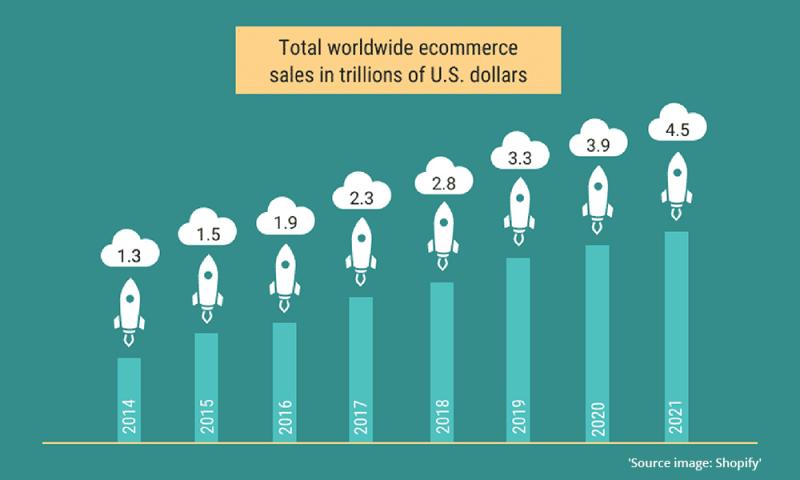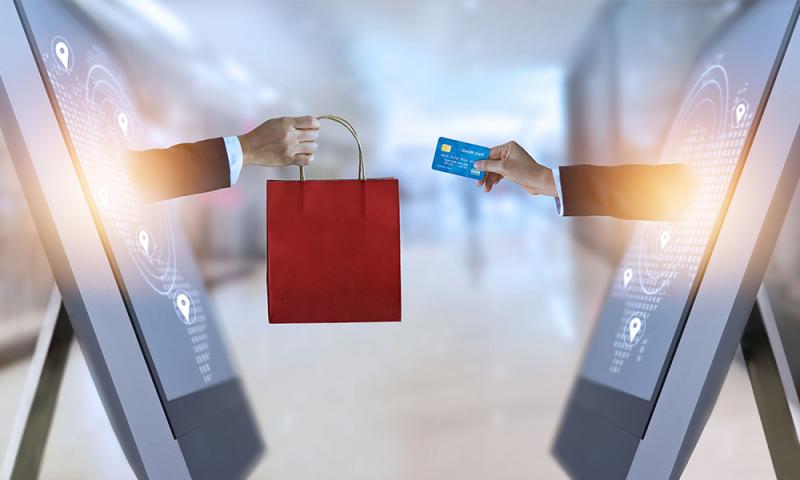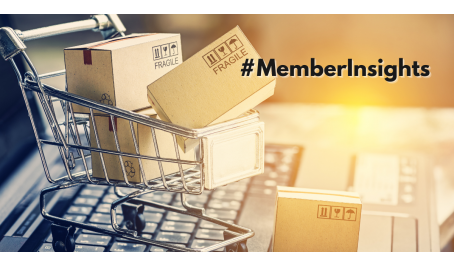- Membership
- The NY Chapter
- Our Career Services
- Committees
- National FACC Network
6 Essential E-commerce Trends for the New Normal and Beyond
Member news | March 03, 2021
Despite all the twists and turns of our new normal, one thing is certain: e-commerce is here to stay. With the sudden pivot to a stay-at-home lifestyle, the boom in online sales was all but inevitable. But the robust performance of e-commerce over the last year is less of a surprise and more of an acceleration of preexisting trends.

Market research company eMarketer estimates that “worldwide retail e-commerce sales grew 27.6% in 2020, for a total of $4.280 trillion.” Zeroing in on US trends, a recent study from McKinsey & Company revealed that 21% of Americans have experimented with new digital shopping methods since the start of the pandemic—with 80% of that number intending to make these new habits permanent.
These shifts don’t signify the fall of traditional retail as much as the rise of the omnichannel experience. The convergence between digital and physical marketplaces will be key moving forward, with smart brands harnessing innovation and taking a holistic approach to delivering the ultimate customer experience.

Against this backdrop, brands must work harder than ever to stand out from the crowd. The average consumer is savvy, well-informed, at ease with online purchases and adept at comparison shopping. In short, they seek more from brands than a simple online transaction to win them over. Thriving in this crowded digital environment calls for more than just adapting to the times—it means always staying one step ahead.
We’ve pinpointed 6 game-changing trends to give your brand an edge in the Age of E-commerce.
1. E-commerce in the palm of your hand
A stay-at-home culture means full connectivity 24/7 in every inch of our living spaces. This means sharpening your focus for mobile users as well as desktop users. Consumers expect a seamless digital experience across all devices and platforms. Preliminary research, price comparison and product exploration could all be handled on a desktop computer before the consumer makes the final purchase on a mobile device—or vice versa. This calls for a robust digital strategy to cover every aspect of the user experience.

2. Keep it personal
The impact of personalization cannot be overstated. While internet users have come to expect a high degree of personalized content, such methods run the risk of alienating potential customers if irrelevant or mistargeted information is deployed. Navigating this terrain means mastering general and individual data, tracking where site traffic originates and adapting with extreme precision when it comes to currency and language parameters. And the numbers don’t lie: a Google-commissioned study by the Boston Consulting Group found that consumers are 110% more likely to add additional items to their shopping carts when provided with a highly personalized shopping experience.

3. Alexa, Siri and Google: Your personal shopping assistants
Already on the rise in recent years, the use of voice search among internet users has shown great potential as another link in the e-commerce purchase chain. This method of online purchase tends to be the very last step of the customer journey after visual research has already been carried out on desktop or mobile. A PwC study found that 50% of respondents in the US said they had already used voice search as a tool for making purchases—representing an enormous opportunity for growth moving forward.

4. Where social media and e-commerce meet
It’s no surprise that social media plays an integral role in overall digital strategies for brands, but now the pathway from scrolling through your feed to clicking “buy now” has been drastically condensed. In many cases, consumers can now experience the full customer journey without ever leaving the app—with both Facebook and Instagram offering in-app shops where purchases can be completed on a trusted and familiar interface. These social media powerhouses offer one central hub that can also be integrated with your preexisting e-commerce platform as part of a robust omnichannel strategy.

5. The values that help seal the deal
The power of choice is a major driving force in e-commerce, and the modern digital landscape offers a staggering array of options. In such a crowded field, the values embraced by your brand can be a differentiating factor to build loyalty and solidify their preferences. The subject of sustainability offers one such edge, promoting environmental protection initiatives, embracing fair-trade sourcing, adopting eco-friendly packaging and shipping practices, and more. Meanwhile, inclusivity is another avenue to win over customers and build brand loyalty—as we’ve explored in the past here.

6. Tomorrow’s e-commerce today
The boom in e-commerce activity is spurring a boom in e-commerce innovation. To stay competitive, your brand must be at the vanguard of emerging technologies with game-changing potential. Augmented Reality (AR) can offer the next best thing to the brick-and-mortar experience, letting consumers visualize products through advanced and interactive means. AI technology can reveal crucial insights about your customers, while Chatbots can offer a helping hand and boost conversion rates 24/7. And the tried-and-tested method of multimedia tools—video, immersive experiences, online tutorials, etc.—continues to evolve and offer new pathways for the e-commerce of tomorrow.

This article has been contributed by FACC Member Sascha Hoffman GM Americas, Datawords Group.
See here the original article publication.

